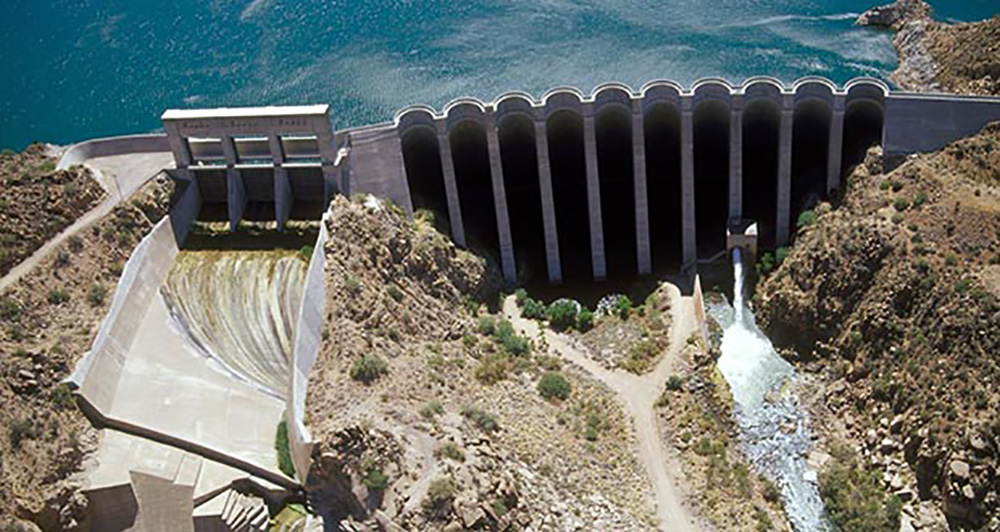Pictured is Bartlett Dam, which is located about 48 miles northeast of Phoenix. Salt River Project, the Bureau of Reclamation and 20 cities around the Valley have joined forces to figure out how to increase water storage on the Verde River, and one proposal is to raise the height of the dam. /PHOTO COURTESY U.S. BUREAU OF RECLAMATION
By Kyra Haas | Arizona Capitol Times
Cities across the Valley have partnered with the Salt River Project to figure out how best to increase water storage on the Verde River.
In the long run, the partners want to offset the declining capacity of Horseshoe Reservoir by raising the height of the Bartlett Dam, which sits about 20 miles downstream, to store that amount of water and then some. The SRP and 20 partners are working with the federal Bureau of Reclamation on the effort.
The partnership is kicking off a four-year study into the feasibility of modifying the Bartlett Dam. Congress authorized the study last year, which followed a two-year long SRP and Reclamation appraisal study.
Modifying the dam
Ron Klawitter, a senior principal at SRP, said accumulating sediment at Horseshoe Reservoir has led to the loss of more than 45,749 acre-feet of water storage, about one-third of the reservoir’s original capacity. An acre foot contains 325,851 gallons.
Exploring how to address that loss, the feasibility study will look at the impacts of raising the height of the 287-foot Bartlett Dam by between 62 and 97 feet.
If the dam were raised by 97 feet, that would increase its capacity to 628,000-acre feet from its current 178,186-acre feet.
The increase would provide enough room to store the existing and restored water from Horseshoe Reservoir and the current amount of water stored in the Bartlett Reservoir. On top of that, it would add 305,784-acre feet of additional capacity to the 80-year-old dam.
During the appraisal study, Klawitter said they found that a 62-foot or 97-foot modification has about the same impacts on habitats and species in the area. While Klawitter said that makes the 97-foot modification more attractive because Central Arizona has such a need for renewable water surface supplies, he noted that the feasibility study would take a closer look at whether that is doable.
“There may be reasons we can’t build it quite that tall, so in that case, we would go down from there,” Klawitter said.
Long-term solutions












